The Possibility of Industrial-Scale Chemical Recycling: Turning Plastic Waste into Gold?
In the global fight against plastic pollution, over 380 million tons of plastic waste are generated annually (OECD, 2023), with projections estimating a rise to approximately 400 million tons by 2025 due to growing consumption.
Yet, global recycling rates remain stagnant at around 9-10%, with low-value, hard-to-recycle plastics—such as contaminated packaging, multi-layer composites, and agricultural films—posing the greatest challenge to achieving a circular economy.
These materials, often destined for landfills or incineration due to their low economic value and processing complexity, represent a critical barrier to sustainable waste management.
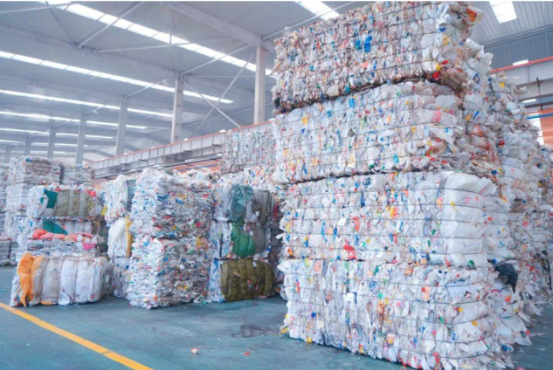
Regional disparities exacerbate this issue: Europe achieves recycling rates of up to 40% for certain plastic packaging due to advanced infrastructure, while Africa and parts of Asia struggle with rates below 5% due to limited collection systems and economic constraints.
In China, annual plastic waste generation exceeds 63 million metric tons (China National Resources Recycling Association, 2023), with an overall recycling rate of around 30%, though low-value, hard-to-recycle plastics have a recycling rate of less than 18%, reflecting significant challenges in managing heterogeneous waste.
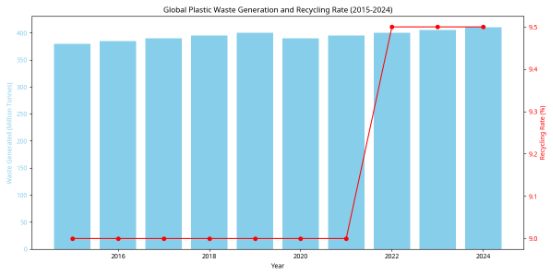
The root issue lies in the limited industrial-scale processing capacity for low-value waste plastics, particularly those that are heterogeneous, contaminated, or degraded.
Traditional mechanical recycling, while effective for clean, single-stream materials, struggles with mixed, soiled plastics from municipal solid waste, industrial scraps, or agricultural applications.
Oil-soaked food wrappers, composite industrial polymers, and impurity-laden mulch films often face downcycling or disposal, highlighting the limitations of mechanical methods in both capacity and applicability.
In regions like North America, where mechanical recycling dominates, the focus on single-stream systems leaves significant volumes of mixed plastics unaddressed, whereas Southeast Asia's reliance on informal recycling networks struggles with contamination and scale.
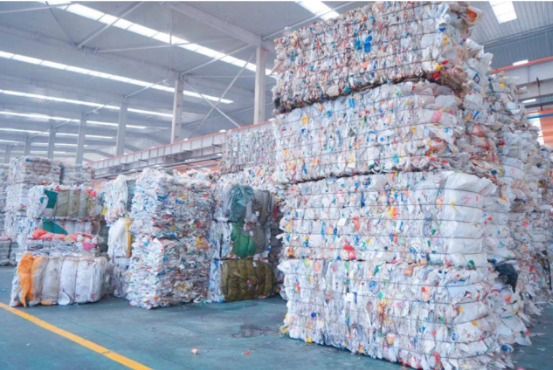
Molecular Rebirth: The Core of Industrial Chemical Recycling
Unlike mechanical recycling, which physically breaks down and reprocesses plastics into secondary products, chemical recycling targets the molecular structure of polymers.
Through processes like pyrolysis, catalytic cracking, and depolymerization, it enables industrial-scale molecular-level breakdown and reconstruction of plastic waste.
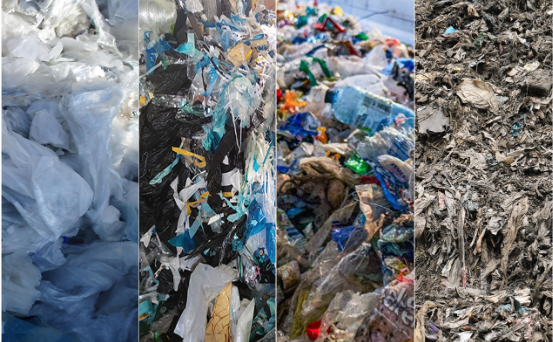
This technology excels in handling low-value, mixed waste streams—regardless of polymer type, color, contamination, or composition. In theory, it can transform nearly all plastic waste into valuable feedstocks for new plastics or chemicals, achieving a closed-loop circular economy.
However, scaling from lab-scale pilots to industrial operations handling hundreds of thousands or millions of tons annually requires significant advancements.
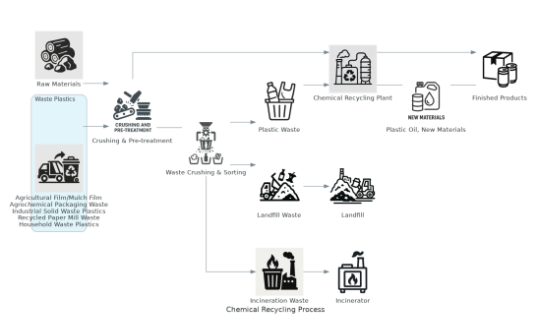
From Pilot to Plant: Scaling Up in the Real World
Chemical recycling is moving beyond theoretical concepts, with industrial-scale projects transitioning from demonstration to commercial operations worldwide, showcasing substantial potential:
● Europe - BASF's ChemCycling™ Project: BASF integrates mixed low-value plastics into its Verbund system via pyrolysis oil, substituting fossil-based feedstocks to produce virgin-grade polymers like polyamide (PA) and polypropylene (PP).
These recycled materials are used in automotive components and food packaging, certified under standards like ISCC PLUS. Europe’s advanced waste collection systems support this initiative, processing up to 80,000 tons annually.
● United States - Eastman's Molecular Recycling: Eastman's facility in Kingsport, Tennessee, employs methanolysis to process hard-to-recycle polyesters (e.g., colored PET bottles, carpets, and textiles) into high-purity monomers, yielding approximately 88,000-99,000 tons of new polyester annually.
The U.S. benefits from strong industrial investment but faces logistical challenges in feedstock supply from diverse regions.
● China - Huicheng Environmental Technology Group's One-Step Catalytic Cracking: In Guangdong, China, Huicheng Environmental Technology Group has launched a 200,000-ton-per-year mixed low-value plastic recycling project.
This initiative pioneers a "one-step" Catalytic Pyrolysis Depth Cracking (CPDCC) technology, directly converting mixed waste plastics into high-value products such as Liquefied Plastic Cracking Gas (LPCG) and Plastic Cracking Light Oil (PCLO).
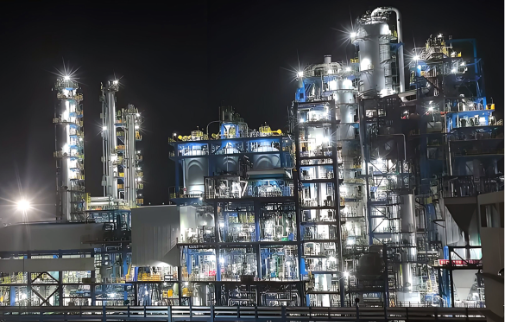
These initiatives demonstrate that industrial chemical recycling is technically viable, with economic feasibility improving through scale, process optimization, and policy support.
They serve as critical complements to mechanical recycling for managing low-value, heterogeneous plastics, with regional adoption varying based on infrastructure and economic incentives, including China's rapid industrial expansion.
Overcoming Hurdles: Pathways to Widespread Adoption
Despite its promise, industrial chemical recycling faces several barriers to becoming a cornerstone of waste management:
① Preprocessing: The Gateway to Efficient Scale-Up Efficient, stable preprocessing of complex waste plastics—such as tangled agricultural films, mixed industrial residues, or plastics from municipal solid waste—is critical to economic viability.
Harden Machinery's industrial shredding solutions, such as our single-shaft shredders, address this bottleneck by enabling high-throughput processing of contaminated, multi-material low-value plastics, enhancing downstream chemical processes like cracking or depolymerization.
Regional differences affect preprocessing needs: Europe's structured waste streams require less intensive sorting, while Africa's informal waste systems demand robust, adaptable equipment.
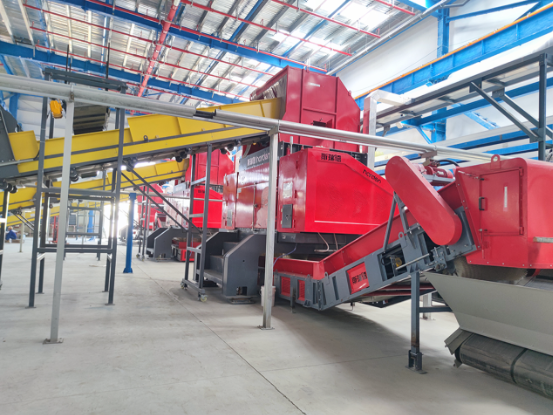
The Harden single-shaft shredder applied to large-scale low-value plastic shredding
Key features of Harden's single-shaft shredder for large-scale low-value plastic shredding:
● Integrated screening system for particle size reduction to 20mm
● Quad-faced cutters for low per-ton production costs
● Variable high-torque drive system adaptable to diverse feedstocks
● Quick-adjust cutting gaps, achieving capacities up to 20 tons per hour
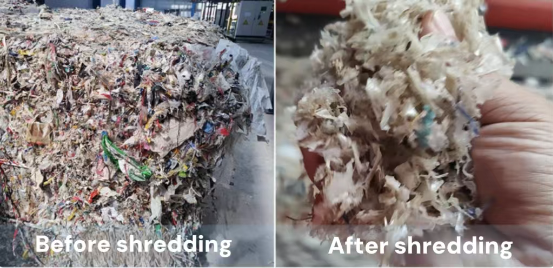
② Core Reaction Optimization
Post-preprocessing, optimizing reaction parameters—energy efficiency, catalyst longevity, yield rates, and product purity—is essential to reducing operational costs and enhancing market competitiveness.
Advanced facilities in North America and Europe lead in catalyst innovation, while Asia, including China, focuses on cost-effective energy solutions to support large-scale operations handling significant waste volumes.
Industrial chemical recycling is not the sole solution to the plastic waste crisis, but it offers an indispensable pathway forward. By transforming what was once considered "waste" into renewable resources, it reintegrates materials into the circular economy.
From lab-scale reactors to megatonne facilities, this evolution represents not just a technological upgrade in solid waste management, but a paradigm shift in resource utilization and sustainable manufacturing.

